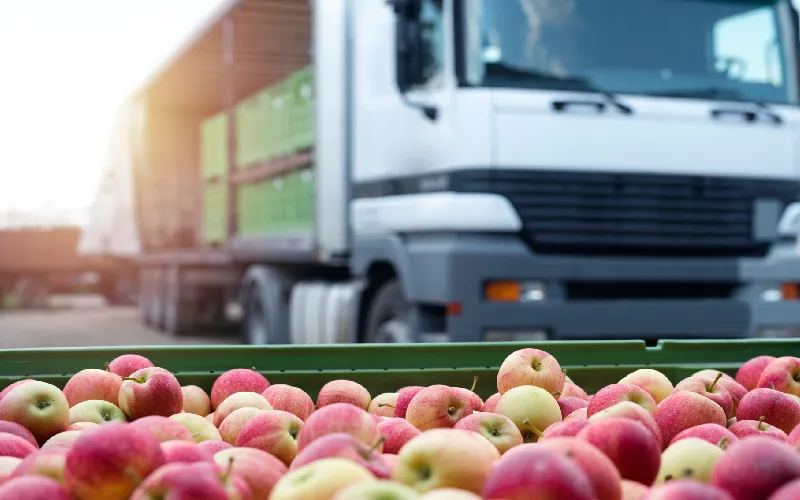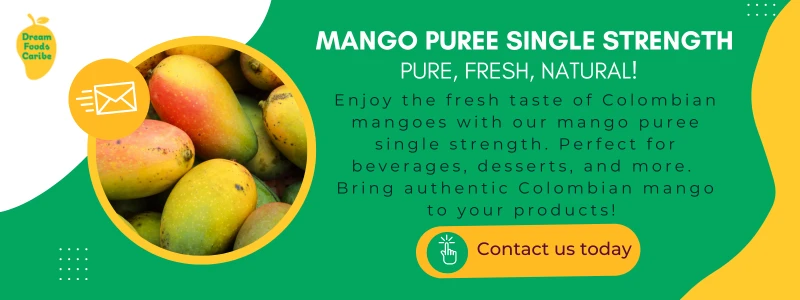Success in the food industry depends not only on product quality but also on how efficiently those products reach consumers. A well-structured distribution channel ensures that food arrives at the right place, at the right time, while maintaining freshness and complying with QA QC standards. Understanding the different types of channels, their impact on costs and customer satisfaction, and the key factors for selecting the best approach is essential for any business in this sector.
In this article, we’ll explore the fundamentals of food distribution, the advantages and challenges of direct and indirect channels, and the critical factors to consider when selecting the most effective strategy.
What is a distribution channel and why does it matter?
A distribution channel refers to the path a product takes from its production site to the final consumer. This process involves multiple intermediaries and logistics operations that ensure availability, maintain quality, and optimize costs. The choice of a channel directly influences a company’s profitability and its ability to meet consumer demands efficiently.
For industries dealing with perishable products—such as fruit purees, juices, and dairy—well-designed channels are crucial for food preservation. Without an efficient system, companies risk spoilage, inefficient transportation, and unmet market demand, leading to financial losses.
Types of distribution channel: direct vs. indirect
There are two primary types of channels in the food industry: direct and indirect. Each has its own advantages and challenges, making the selection process highly dependent on the type of product, target audience, and logistical capabilities of the business.
Direct channels
In this model, manufacturers sell products directly to consumers, bypassing intermediaries. This approach provides greater control over pricing, branding, and customer interactions, making it ideal for businesses that emphasize freshness, traceability, and strong customer relationships.
Advantages of direct distribution channels
Choosing a direct distribution channel offers several benefits, particularly for businesses that value control and direct engagement with customers; for example:
- First: higher profit margins. Eliminating intermediaries allows businesses to retain a larger portion of revenue.
- Second: stronger brand loyalty. Direct interaction helps build lasting relationships and personalized customer experiences.
- Third: enhanced quality control. Businesses oversee every stage of storage, transportation, and delivery, ensuring strict QA QC standards.
Challenges of direct distribution channels
While direct channels offer advantages, they also come up with some challenges that businesses must consider:
- First, higher operational costs: managing logistics, warehousing, and distribution in-house can be expensive.
- Also, limited market reach: expanding distribution to multiple regions without intermediaries requires significant resources.
- And logistical complexities: companies must handle transportation, storage, and customer service independently.
Examples of a direct distribution channel
Many food manufacturers successfully use direct channels to connect with consumers. For example:
- Online Stores or Direct-to-Consumer (DTC) sales: many brands leverage e-commerce platforms to sell directly to consumers, especially in niche markets like organic farming and specialty foods.
- Company-owned retail outlets: some food producers operate their stores, ensuring full control over product presentation and pricing.
- Farmers’ markets or subscription-based delivery services: local food producers often sell directly through farmers’ markets or curated subscription boxes.
Indirect channels
Indirect channels involve intermediaries such as wholesalers, retailers, and distributors. Although this method adds extra steps to the supply chain, it allows businesses to scale operations, expand market reach, and leverage established retail networks.
Advantages of indirect channels
Using an indirect distribution channel can help businesses expand their reach and streamline logistics. Some key benefits include:
- Wider market reach: businesses can more easily access national and international markets by partnering with wholesalers and retailers.
- Also, lower logistical burden: manufacturers can focus on production while leaving storage and distribution to third parties.
- In the same way, established consumer base: retailers and distributors already have a loyal customer base, increasing product visibility and sales potential.
Challenges of an indirect distribution channel
However, indirect channels also present potential drawbacks:
- Lower profit margins: intermediaries take a percentage of the profits, reducing direct revenue.
- Reduced control over branding and pricing: retailers may influence pricing and promotions, affecting brand perception.
- Dependency on third parties: supply chain inefficiencies can impact product availability and freshness.
Types of indirect channels
Businesses that opt for indirect channels typically work with one or more of the following intermediaries:
- Wholesalers: these are large-scale buyers who purchase products in bulk and distribute them to smaller retailers. They play a key role in food supply chains, particularly for packaged and non-perishable goods.
- Retailers: supermarkets, grocery stores, and specialty shops serve as the primary points of sale for consumers. They offer convenience and product variety, making them an essential part of food distribution.
- Distributors: these companies specialize in logistics, warehousing, and transportation, ensuring food preservation during transit. Distributors are especially important for perishable goods like dairy, frozen foods, and fresh produce.
Key factors to consider when selecting a distribution channel
Selecting the right channel requires a deep understanding of logistics, costs, and consumer behavior. Some of the most important factors include:
- Product perishability: for companies in the fruit pulp industry, minimizing the time between production and consumption is essential for maintaining quality.
- Distance and logistics: businesses must consider the proximity of food manufacturing facilities to target markets, especially in organic farming, where efficiency is crucial.
- Consumer preferences: understanding shopping habits can help companies choose the most effective channel.
- Storage and handling capabilities: intermediaries must have the infrastructure to store and transport products under proper QA QC conditions.
- Cost efficiency: evaluating distribution expenses versus expected profit margins ensures the sustainability of the chosen channel.
By carefully analyzing these factors, businesses can develop an optimal strategy that balances cost-effectiveness and customer satisfaction.
Optimizing distribution channel management in the food industry
To maximize the efficiency of a channel, companies should implement the following best practices:
- Firstly: partner with reliable distributors. Working with trusted logistics providers ensures smooth delivery operations.
- Secondly: utilize technology. Inventory management systems and shipment tracking tools streamline operations and enhance QA QC compliance.
- Thirdly: develop strong marketing strategies. Effective branding and targeted promotions improve channel performance.
- Fourthly: expand into new markets. Collaborating with specialized exporters can facilitate global expansion while meeting regulatory requirements.
Dream foods: a leader in food manufacturing and global distribution
At Dream Foods, we take pride in being a leading player in the fruit pulp and juice industry. We specialize in producing purées, natural juices, and concentrated tropical fruit products. Our commitment to quality and innovation enables us to share the authentic flavors of Colombia with the world.
We supply essential ingredients to a wide range of industries, including beverages (juices, flavored waters, beers, smoothies), dairy (yogurts), ice cream, jams, and baked goods. With our expertise in food preservation, we ensure that our products maintain freshness and quality throughout the distribution channel.
As we focus primarily on mango products, we cater to large-scale industries looking for premium fruit ingredients. By optimizing our channels, we efficiently reach international markets, making it easier for businesses worldwide to access the best fruit-based ingredients.
Choosing the right distribution channel for your business
A well-structured distribution strategy is a crucial factor in the success of any food business. Whether opting for direct or indirect channels, companies must consider logistics, cost-efficiency, and consumer behavior to optimize their supply chains.
By leveraging technology, implementing effective strategies, and partnering with reliable distributors, businesses can ensure their products reach the right markets while maintaining high QA QC standards.
For companies seeking premium fruit ingredients and an optimized distribution channel, Dream Foods is a trusted partner. Explore our products and services at Dream Foods and discover how we bring the best of Colombian fruit to the world.
Referencias Bibliográficas
- Dobos, O. (2024, August 28). 7 best marketing channels for restaurants & how to efficiently use them. GloriaFood.
- GourmetPro. (2023, May 18). Mastering international distribution channels for overseas growth in 2024.
- New Point Marketing. (2024, March 13). Food and Beverage Distribution Channels: Strategies for Success.






